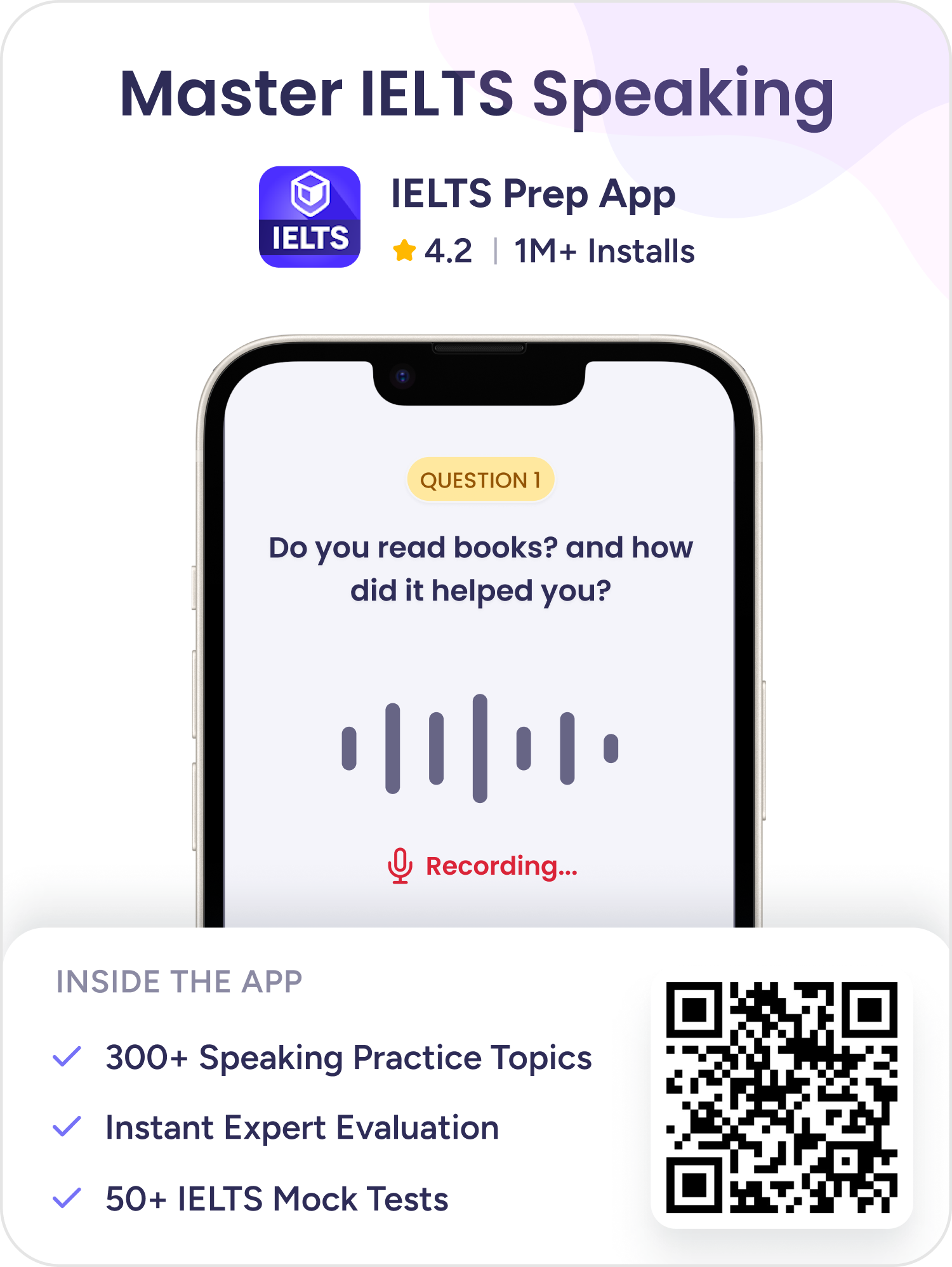Describe A Bag You Want To Own: IELTS Speaking Cue Card
You should say
- What does it look like?
- Where will you buy it?
- Where will you buy it?
- Why do you want it?
25 unique answers with expert feedback
Band 7
00:00
/
00:00
Follow up questions
Follow up questions
Why do you think bags are important for personal style?
How do you choose the right bag for different occasions?
What other accessories do you think are essential for a complete look?
Band 6-7
00:00
/
00:00
Follow up questions
Follow up questions
What do you think about eco-friendly products?
Why do you prefer handmade bags over mass-produced ones?
How important is the brand when choosing a bag?
Band 6-7
00:00
/
00:00
Follow up questions
Follow up questions
What features do you think are important in a bag?
Why do you think designer bags are popular?
Have you ever owned a designer bag before?
Practice other cue cards
Band 6-7
00:00
/
00:00
Follow up questions
Follow up questions
What are the benefits of using eco-friendly bags?
How do you think society can reduce plastic usage?
What features do you look for in a bag?
Band 6-7
00:00
/
00:00
Follow up questions
Follow up questions
What features do you look for in a bag?
How do you usually save money for things you want?
Why do you prefer handmade bags over mass-produced ones?
Cue 1:What does it look like?
- Describe the color, size, and style of the bag you want to own.
- Mention any specific features like pockets, material, or brand that make it appealing.
Example
The bag I want to own is a sleek black leather backpack. It has a minimalist design with a smooth finish and subtle gold accents. The size is perfect for carrying my laptop and books, making it ideal for college. It also has multiple pockets for organization, which I find very practical.
Cue 2:Where will you buy it?
- Mention specific stores or online platforms where you can find the bag.
- Explain why you chose that particular place to buy it.
Example
I plan to buy this bag from a popular online store like Amazon or Flipkart. They often have great discounts and a wide variety of options. Additionally, I can read customer reviews to ensure I’m making a good choice.
Cue 3:When will you buy it?
- Discuss any upcoming events or occasions that might prompt you to buy the bag.
- Mention if you are saving money for it or if it’s an impulse buy.
Example
I intend to buy this bag next month, as I have been saving up for it for a while. I want to treat myself for my birthday, which is coming up soon. It feels like the perfect gift to myself.
Cue 4:Why do you want it?
- Explain the practical reasons for wanting the bag, such as functionality or style.
- Share any emotional reasons, like how it represents a personal goal or achievement.
Example
I want this bag because it combines style and functionality. As a student, I need something that looks professional for my internships but is also practical for daily use. Moreover, owning this bag would make me feel more confident and organized.
Conclusion
Example
In conclusion, the black leather backpack I desire is not just a fashion statement but a practical accessory that will enhance my daily life. I look forward to purchasing it soon and making it a part of my journey.
Following this structure will ensure you cover all the essential points while providing a clear and engaging response to the cue card topic.
Tips to answer this Cue Card
1: Vague Descriptions
Using vague language can make your answer less engaging. If you don't describe the bag clearly, the examiner may not understand your thoughts.
Tip
Use specific adjectives and details to describe the bag's color, size, and style to create a vivid image.
2: Repeating Information
Repeating the same information can make your response sound unprepared. It can also waste valuable time during your speaking test.
Tip
Plan your answer to cover different aspects of the bag, such as its appearance, where to buy it, and your reasons for wanting it.
Lack of Personal Connection
Failing to explain why you want the bag can make your answer feel impersonal. The examiner is interested in your personal experiences and feelings.
Tip
Share a personal story or reason that connects you to the bag, making your answer more relatable and engaging.
IELTS Cue Cards asked last week
Reported by Leap students who gave IELTS
All Answers
Here are all the answers by real-users practicing speaking for IELTS Cue Cards on our IELTS Prep App.
Band 7
Band 6-7
Band 6-7
Band 6-7
Band 6-7
Band 6-7
Band 6-7
Band 6-7
Band 6
Band 6

Explore
473 Cue Cards

Personal Experience
121 Cue Cards

Describing People
66 Cue Cards

Travel
47 Cue Cards

Personal Development
45 Cue Cards

Hobbies/Interests
44 Cue Cards
Environment/Culture
39 Cue Cards

Tech/Media
27 Cue Cards

Education/Work
19 Cue Cards

Social Issues
19 Cue Cards

Describe An Object
16 Cue Cards
Business/Shopping
16 Cue Cards

Food/Cooking
8 Cue Cards
Fashion
6 Cue Cards
Get the IELTS Prep App
4.2
1M+ Installs
Get the IELTS Prep App
4.2
1M+ Installs
Get the app link on your phone
Or download app from





